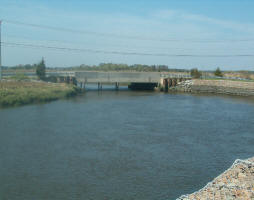 European Commission proposes to improve and streamline the European system for collecting, analysing and reporting environmental information
European Commission proposes to improve and streamline the European system for collecting, analysing and reporting environmental information
Timely, reliable and relevant information on the state of environment is
essential for sound policies. This includes information on how the climate
is changing, whether European waters are improving and how nature is
reacting to pollution and changing land use. Such information should be made
available to all and be easily understood. To this end the Commission
proposes to improve, modernise and streamline the present information
systems by establishing a European Shared Environment Information System.
The objective of this system is to tie better together all existing data
gathering and information flows using modern tools such as the internet and
satellite technology. The objective is also to move away from paper based
reporting and reports to a system where data is made available to the users
at source in an open and transparent way.
More than 70 of the several hundred pieces of environmental legislation in
force in the European Union require Member States to report on specific
aspects of the environment within their territory. A large amount of
environmental data is thus collected by various levels of public authorities
throughout the EU.
This information is used to analyse trends and pressures on the environment
and is vital when drawing up policy and assessing whether policy is
effective or being properly implemented. At present, this wealth of
information is neither made available in a timely manner nor in a format
that policy makers and the public can readily understand and use. This is
due to a range of obstacles of a legal, financial, technical or procedural
nature.
With the Shared Environmental Information System (SEIS)
environmentally-relevant data and information would be stored in
environmental databases throughout the European Union and would be
interconnected virtually and be compatible. The proposed SEIS is a
decentralised but integrated web-enabled information system based on a
network of public information providers sharing environmental data and
information.
Information and communication technology will enable real-time data to be
made available to decision-makers and allow them to make immediate and
life-saving decisions. Recent experiences of forest fires, floods and
droughts show how much timely environmental information can make a
difference during an emergency.
Tackling today's environmental challenges such as water scarcity,
preserving ecosystems and biodiversity, and adapting to climate change
depend on the assessment of data from a variety of sectors and sources. For
example, the health effects of air pollution can be evaluated if statistics
on air quality, population concentrations and health statistics are
overlapped for a specific region or geographical area and analysed
collectively. Action can follow based on the results.
SEIS will offer EU Member States an efficient electronic system to fulfil
their reporting obligations on EU environmental policies and legislation.
The new system will be especially helpful in avoiding the duplication of
reporting efforts, the streamlining of data flows, and reducing monitoring
and reporting costs.
In return SEIS will provide Member States and EU institutions with more
coherent environmental information to facilitate the drafting,
implementation, and effectiveness of environmental policies.
European citizens will also be empowered by SEIS. It will provide them with
useful environmental information in their language and thus enable them to
make informed decisions on their environment and influence public policy.
A detailed implementation plan for SEIS will be presented some time in
2008. It will be built on efforts already being undertaken in Europe to
create integrated information systems. These include the Water
Information System for Europe (WISE) and the European environment
information and observation network (EIONET), the 2007 INSPIRE
Directive on access and interoperability of spatial data, and the Global
Monitoring for Environment and Security (GMES) initiative on Earth
monitoring data from satellites. However, there is no integrated platform to
connect all these initiatives into a shared and common system. SEIS aims to
fill in this gap.
EU financial support to complement the national and regional budgets to
implement SEIS will come from the Research Framework Programmes, LIFE, the
Competitiveness and Innovation Programme (CIP) and the Structural Funds.
| Contact information | n/a |
|---|---|
| News type | Inbrief |
| File link |
http://europa.eu/rapid/pressReleasesAction.do?reference=IP/08/185&format=HTML&aged=0&language=EN&guiLanguage=fr |
| Source of information | Europa- Rapid |
| Keyword(s) | EU-LIFE, MedWIP, WISE, GMES, INSPIRE, EIONET |
| Subject(s) | INFORMATION - COMPUTER SCIENCES , METHTODOLOGY - STATISTICS - DECISION AID , NATURAL MEDIUM , POLICY-WATER POLICY AND WATER MANAGEMENT , PREVENTION AND NUISANCES POLLUTION , RIGHT |
| Relation | http://www.semide.net/documents/fol962872/euro_legislation |
| Geographical coverage | EU |
| News date | 03/03/2008 |
| Working language(s) | ENGLISH , FRENCH |
 you are not logged in
you are not logged in





